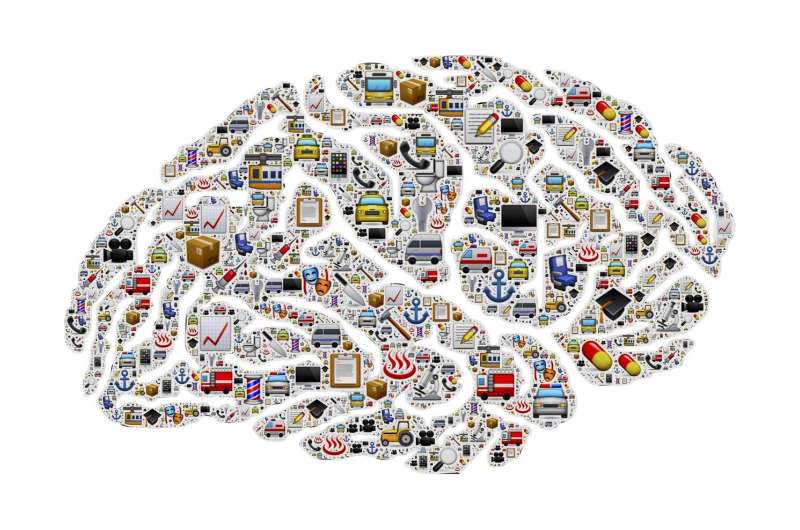Researchers find a way to increase spatial resolution in brain activity visualization

Researchers from the HSE Institute for Cognitive Neuroscience have proposed a new method to process magnetoencephalography (MEG) data, which helps find cortical activation areas with higher precision. The method can be used in both basic research and clinical practice to diagnose a wide range of neurological disorders and to prepare patients for brain surgery. The paper describing the algorithm was published in the journal NeuroImage.
Magnetoencephalography (MEG) is a method based on measuring very weak magnetic fields (several orders of magnitude weaker than the Earth's magnetic field) induced by the brain's electrical activity. When using MEG, researchers face the complicated task of understanding which areas inside the brain were active when they only have the measurements of sensors placed around the head. This problem is called an 'inverse problem' and fundamentally has no universal solution: any set of measurements can be explained by an endless number of different configurations of neural activity sources on the cortex.
To make application of MEG practical, special mathematical methods are used to turn sensor signals into cortical activity maps. These methods can be categorized into two groups. As part of the so-called 'global' approach, the multitude of possible solutions for the inverse problem is narrowed down based on the generalized a priori assumptions on brain activity. Under these constraints researchers look for a distribution of sources in the cortex that would explain the measured data. The 'local' methods, including the algorithm described in the paper (ReciPSIICOS), aim to find separate sources, and only after that, to create a complete image of brain activity.
ReciPSIICOS uses adaptive beamformers (BF) - a method to process sensor measurements that allows detection of an activity signal of a target neuronal population. For this purpose, it attempts to mute the signals from other sources, but not from all of them as is done in the 'global' approach, but instead only the ones that are active at the moment. When suppressing only active signals, this approach is able to provide a considerably higher fidelity in activity visualization as compared to the 'global' approach. However, this method can also suppress the target signals begotten by neuronal ensembles activated simultaneously with neuronal populations in other brain areas. In real-life conditions, such correlation reflects the interaction between neuronal populations, which is an inherent property of the brain, and researchers have to look for methods to overcome this obstacle.
Information on active neuronal populations and the nature of their interaction is encoded in a special covariance matrix, which can be calculated based on the sensor data. This matrix is used by the beamforming algorithm to decide which of the sources should be suppressed. Strictly speaking, this approach is applicable only when sources do not interact: information on such interaction is also contained in the correlation matrix and negatively impacts beamforming algorithm performance. Using the observed data model and the correlation matrix model, the researchers developed a mathematical algorithm that is able to erase the information on sources' interaction from the correlation matrix. This way they extended the range of applicability of the beamforming method to the environment with synchronous neuronal sources and provided the necessary precision in the visualization of interacting neuronal populations.
"Magnetoencephalography technology combines the ability to register precise aspects of the temporal evolution in neuronal activity and a potentially high fidelity of localizing the active neuronal populations. The first feature comes from registration of electrical activity that is changing significantly faster than the hemodynamic responses exploited by fMRI, a popular functional brain imaging modality. To achieve a high precision in spatial localization complicated mathematical methods are needed. The family of ReciPSIICOS and PSIICOS methods is an example of mathematical algorithms aimed at increasing the spatial resolution of MEG modality detect active and interacting neuronal populations," said Alexey Ossadtchi, Ph.D., Director of the HSE Centre for Bioelectric Interfaces, the author of the new methods.
To evaluate the algorithm performance, the researchers first generated a dataset that mimics the signals received by the sensors in real-life and tested four methods on it: two types of ReciPSIICOS and two previously developed algorithms (linearly constrained minimum variance (LCMV) beamformers, and Minimum-Norm Estimates (MNE) approach). In situations when there is no correlation between signals, LCMV and both ReciPSIICOS methods work well, but when there is a correlation, ReciPSIICOS handles the task much better than its predecessors. Under the stress test for the forward modeling accuracy the results are similar: ReciPSIICOS proved to be less sensitive to inaccuracy of the models used, which are inevitable in practice. The scholars also demonstrated operability and high performance characteristics of the new approach on several real MEG datasets characterized by the presence of synchronous neuronal sources that could not be adequately processed by the classical beamforming algorithm.
More information: Aleksandra Kuznetsova et al, Modified covariance beamformer for solving MEG inverse problem in the environment with correlated sources, NeuroImage (2020). DOI: 10.1016/j.neuroimage.2020.117677


















